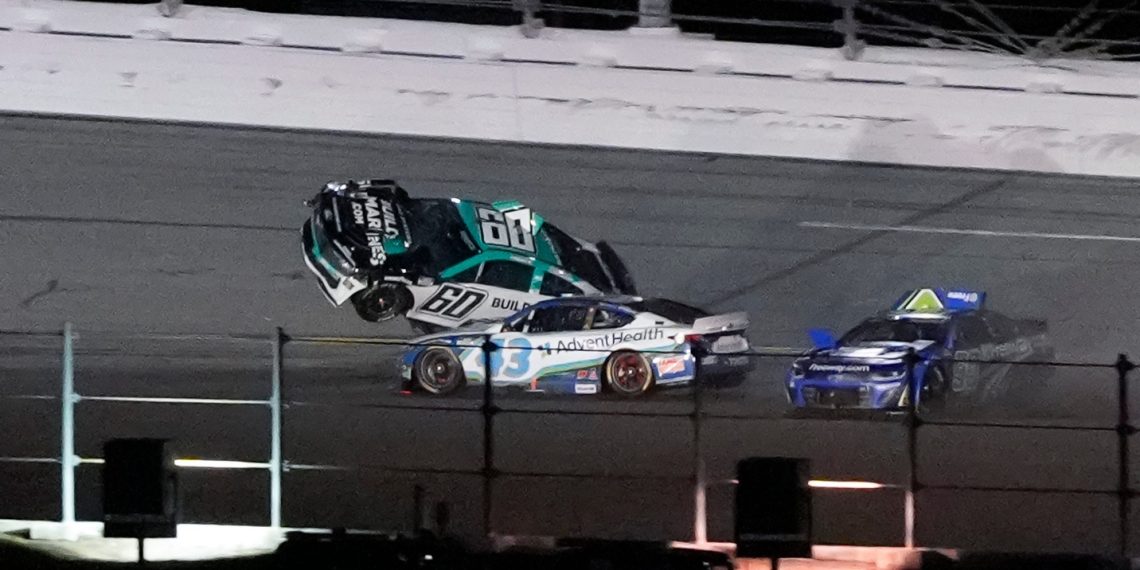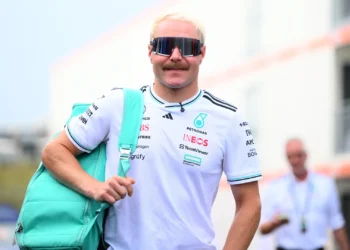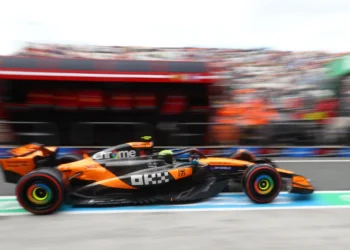Ryan Preece, the renowned stock car racing driver from Connecticut, recently experienced a heart-stopping crash at the Daytona 500. This marked Preece’s debut for RFK Racing and unfortunately, it wasn’t his first encounter with dread on the race track. The harrowing incident saw his No. 60 Ford become airborne after a collision with another racer. This was a chillingly familiar scenario for Preece, who has previously experienced similar high-stakes incidents at the acclaimed ‘World Center of Racing’.
During the crash, Preece was gripped not only by fear for his own safety, but was also acutely concerned for spectators. He recalled the terrifying crash of Austin Dillon at the Coke Zero 400, where Dillon’s car breached the fence and risked the lives of fans in the stands. Preece was desperate to avoid a similar outcome.
The nightmare scenario unfolded at Daytona International Speedway just eight laps shy of the season opener’s conclusion. Amid the chilling silence of his airborne cockpit, Preece’s thoughts were with his daughter. The robustness of the Next-Gen car certainly played a significant role in his fortunate escape from injury, but the potential for a far more disastrous outcome was palpable.
In conversation with Corey LaJoie on the Stacking Pennies podcast, Preece gave a candid account of the traumatic incident: “It happened so fast. One moment they were signaling a wreck, and the next, I was airborne, and everything was eerily silent. I knew I was high off the ground and moving fast. I even tried to brake mid-air, hoping to somehow control the trajectory. I remember thinking, ‘I want off this ride.’”
In 2015, Austin Dillon’s car hit the catch fence after the finish of the Coke Zero Sugar 400, causing injuries to his tailbone and forearm. More alarmingly, his car ended up in the stands, leading to injuries among several spectators. In the aftermath, track president Joie Chitwood III reported that 13 fans required medical examination, five of whom needed medical aid. One fan was even transferred to a local hospital.
Preece’s reference to “past the fence” underscores his fear of replicating Dillon’s accident and endangering spectators’ lives. As it happened, Preece’s No. 60 Ford crashed head-on, preventing the roof flaps from deploying and extending the crash. The driver then took down his window nets, signaling to relieved onlookers that he was unharmed.
However, this incident has drawn attention to the Next-Gen car’s troubling tendency to become airborne. Preece compared his recent crash to a 2023 incident, stating, “The car lifting off like that felt worse than Daytona in ’23. I don’t think a head-on impact should have sent the car airborne.”
Such incidents have become worryingly commonplace. Other drivers including Josh Berry and Harrison Burton have experienced similar incidents, with their vehicles taking flight under adverse conditions. This trend, along with NASCAR’s lack of fatalities since Dale Earnhardt Sr.’s tragic passing in 2001, underscores the urgent need for proactive safety measures.
Ultimately, while Preece was fortunate this time, he and other drivers should not have to test their vehicles’ robustness under such life-threatening circumstances. The message is clear: NASCAR must prioritize safety to prevent track tragedies.













